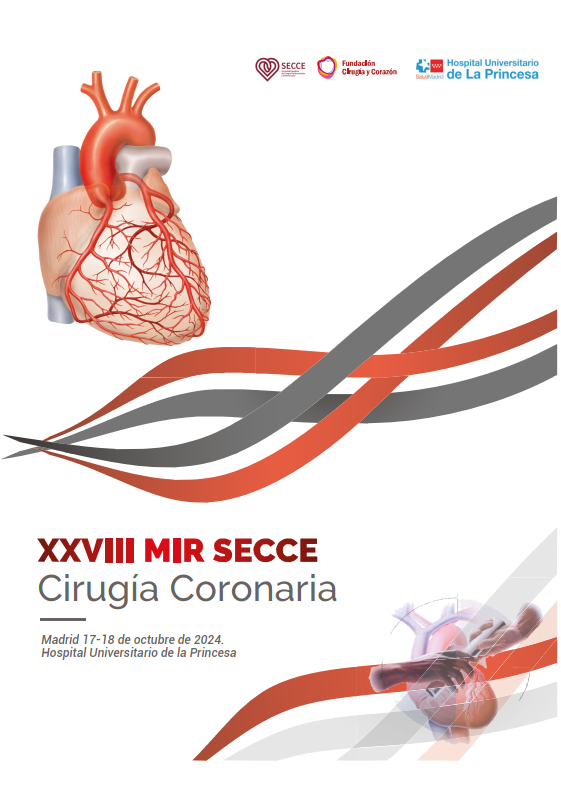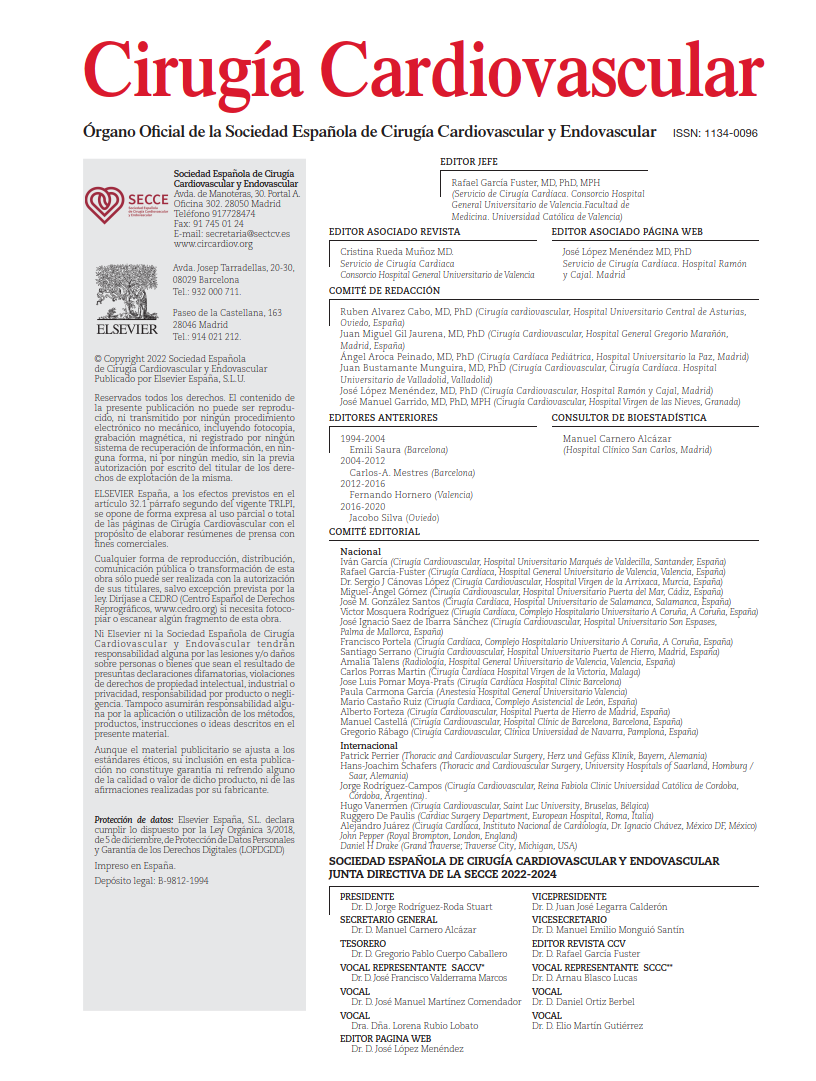Following the recently published, encouraging multisociety endorsement (AATS, STS, LACES, and the Asian Society for Cardiovascular Surgery) of the 2024 ESC–EACTS European guidelines on revascularization—issued in response to their divergence from the unilaterally developed American cardiology societies’ recommendations—new data continue to emerge comparing outcomes between percutaneous and surgical revascularization strategies. This time, the focus is on patients with multivessel coronary artery disease and left ventricular dysfunction.
Alzahrani et al conducted a retrospective, multicenter cohort study involving patients diagnosed with multivessel coronary artery disease—defined as ≥70% stenosis in the left anterior descending, circumflex, and right coronary arteries, or ≥50% in the left main coronary artery—and severe left ventricular dysfunction (LVEF ≤ 35%). The study analyzed cases from the state of New Jersey (USA) between 2007 and 2018, comparing two treatment strategies: percutaneous coronary intervention (PCI) and coronary artery bypass grafting (CABG). One of the variables evaluated was the achievement of complete revascularization, defined as a perfect match between the number and location of lesions and the number of grafts or stents delivered.
The primary endpoint was all-cause mortality. Secondary endpoints included the incidence of stroke, myocardial infarction (MI), repeat revascularization, and heart failure readmission. Propensity score matching was used to create comparable groups, and Kaplan–Meier curves were applied to assess survival.
The study population included 5988 patients, of whom 61.3% underwent CABG and 38.6% underwent PCI. After propensity score adjustment, the matched cohort comprised 598 patients in each group, with a mean age of 68.4 years and a proportion of women of 28.5% in the CABG group versus 29.3% in the PCI group. The median LVEF was 30% (IQR 23–35%). Complete revascularization was achieved in 20% of PCI cases and 93% of CABG cases in the unmatched population. After propensity score adjustment, complete revascularization was achieved in 56% of patients in both groups.
In the overall population, 30-day mortality was 2% for CABG versus 4.5% for PCI (p < .001), with higher rates of repeat revascularization and MI in the PCI group. Stroke and heart failure readmission rates were similar between groups. In the matched cohort, 30-day mortality was 3.5% after CABG and 4.2% after PCI (p = .55), with no significant differences in the secondary outcomes.
The mean follow-up was 5.2 years. In the propensity-matched cohort with complete revascularization, long-term mortality was 57% for PCI and 60% for CABG (p = .27). However, when complete revascularization was excluded from the propensity model, PCI was associated with a significantly higher risk of death compared to CABG (HR = 1.35; 95% CI = 1.20–1.52; p < .001), along with increased risks of repeat revascularization and MI. No differences were observed between diabetic and non-diabetic patients, although the risk of repeat revascularization was higher when completeness of revascularization was excluded from the matching algorithm (HR = 1.81; 95% CI = 1.35–2.44; p < .0001).
When including only patients treated in the last 5 years of the study period to assess the potential influence of contemporary medical therapy for ischemic heart disease and heart failure, mortality, stroke, and repeat revascularization rates were similar between groups. However, PCI patients exhibited higher rates of heart failure and MI. In the propensity-matched analysis excluding complete revascularization, both repeat revascularization (HR = 2.15; 95% CI = 1.70–2.73; p < .001) and MI (HR = 2.41; 95% CI = 1.72–3.38; p < .001) were more frequent after PCI, whereas stroke and heart failure readmission rates remained comparable between groups.
The study had several limitations. First, second-generation stents were not used. Second, the SYNTAX score was not reported. Third, information on myocardial viability testing was unavailable.
The overall conclusion was that, in patients with multivessel coronary artery disease and severe left ventricular dysfunction, there were no significant differences in mortality, stroke, or heart failure readmission between CABG and PCI when complete revascularization was achieved—though complete revascularization was only attained in 20% of PCI cases compared to 93% of CABG cases. Notably, patients undergoing surgery had a lower risk of MI and repeat revascularization.
COMMENTARY:
This study contributes new evidence regarding the management of a clinical spectrum defined by a common denominator: multivessel coronary artery disease with severe left ventricular dysfunction. According to the most recent clinical practice guidelines on chronic coronary syndrome, CABG is recommended over medical therapy alone to improve long-term survival. If surgical risk is high or the patient is deemed inoperable, PCI may be considered as an alternative to CABG.
The first of these recommendations stems from the well-known STICH trial, which showed that, despite higher 30-day mortality in the surgical group, 10-year outcomes favored CABG combined with medical therapy over medical therapy alone. However, that study had several limitations, including a notable rate of crossover between arms and the fact that it was conducted before the adoption of modern quadruple medical therapy for patients with heart failure and reduced ejection fraction.
Subsequently, the REVIVED-BCIS2 trial published in 2022 randomized 700 patients with severe left ventricular dysfunction and multivessel disease to medical therapy versus PCI. That trial showed no differences in all-cause mortality or heart failure hospitalizations. Based on those findings, PCI and medical therapy were considered to offer comparable outcomes, reinforcing CABG as the preferred first-line strategy in this setting.
However, I believe that several aspects require clarification. First, the clinical presentation must be considered. The spectrum of ischemic cardiomyopathy ranges from non–ST-elevation myocardial infarction to chronic heart failure, all of which reflect different expressions of the same disease. In Alzahrani et al’s study, there were marked differences in baseline functional class, with a higher proportion of NYHA class III/IV patients in the general population—likely reflecting a greater incidence of presentation with heart failure. More specific diagnostic categories are needed to support tailored recommendations.
Second, the importance of complete revascularization and procedural planning must be emphasized. The superior outcomes observed with CABG may in part be attributable to the use of arterial grafts that provide improved long-term patency, but also to the higher rates of complete myocardial revascularization—consistently documented in registries and studies favoring CABG over PCI.
Finally, the role of medical therapy should never be overlooked. Recent advances in therapeutic targets have achieved greater reductions in cardiovascular mortality than any previous strategy. In this context, revascularization should be viewed as a foundational step within a broader, comprehensive treatment pathway.
REFERENCE:
Alzahrani, A. H., Itagaki, S., Egorova, N. N., & Chikwe, J. Choice of revascularization strategy for ischemic cardiomyopathy due to multivessel coronary disease. Journal of Thoracic and Cardiovascular Surgery, 2024;169(2):639-647.e21.



